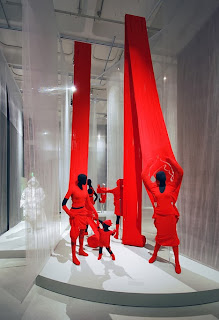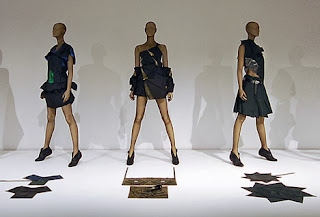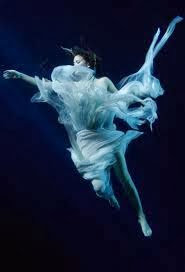After a lot of deliberation over the design to appear on the Japanese Gampi tissue garment, I eventually settled on a simple route taken from a large Bristol A-Z map. One line was chosen and ran from our house to the bridge with some off shoots or variations on possible choices that Carl may or may not have made because that is what it is all about - I don't know how he got there, how he was feeling and just why he had to do it. Like everyone else who may have been abandoned through suicide, our lives change forever, our relationships with the world change forever and our questions never cease. For some people this is difficult to understand and the tragedy is not mentioned, for others they will offer support which is invaluable, but it is only the person affected who can truly make the repairs needed to be able to continue with the altered life that they now live.
So my garment looks beautiful, delicate and fragile; there is an attractive design but it is only on further questioning that it may e realised that the marks have a far deeper meaning. Also the techniques used: the paper was very fragile and difficult to manage just as out lives have been since loosing Carl. The design was burnt into the paper causing holes that had to be repaired very carefully and with meticulous attention to detail, but one wrong move would cause another tear. These two images show parts of the garment -
 |
| The garment |
 |
| Close up of Japanese Gampi Tissue with free machine embroidery repair |
These pictures show the work in progress - working out where to place the chosen design, scorched marks on Japanese Gampi tissue, attaching the magic solvy with hand stitches ready to stabilise the work before repairing with machine embroidery.
 |
| Planning where to place the design |
 |
| Scorched Japanese Gampi tissue |
 |
making the repair
|
The last part of the garment was to add the buttons and hem. But after struggling to make the hem level, unpicking first attempt (which is very difficult as the paper becomes very weak and fragile) and then completing the second attempt I realised that this did not work.
 |
| Hemmed garment |
The garment had been closed, the subject finished and there was nowhere else to go with the idea. But I did not want to remove the hem straight away and have left the garment hanging in my bedroom until I decide just what to do because any changes will be irreversible.
The next image shows a sample with the hem scorched just at the marks which represent the end of the journey taken by Carl. Whilst a lot of repairing has happened and looks quite beautiful, the vulnerable issues of the design is now evident at the most poignant part. This suggests that the subject of why Carl died and how successful the repair to our lives has been will never be fully known, but we can look at the positive things that have happened and that whilst life will never be the same again, it can still be full of hope and beauty.
 |
Scorched hem line
|
I now have to decide on an appropriate title for the work and how I might present the garment for the degree show. And there are the stories of physical objects that have been damaged and how the repair was managed; the typing has to be completed and the pages bound together in a handmade book.






























